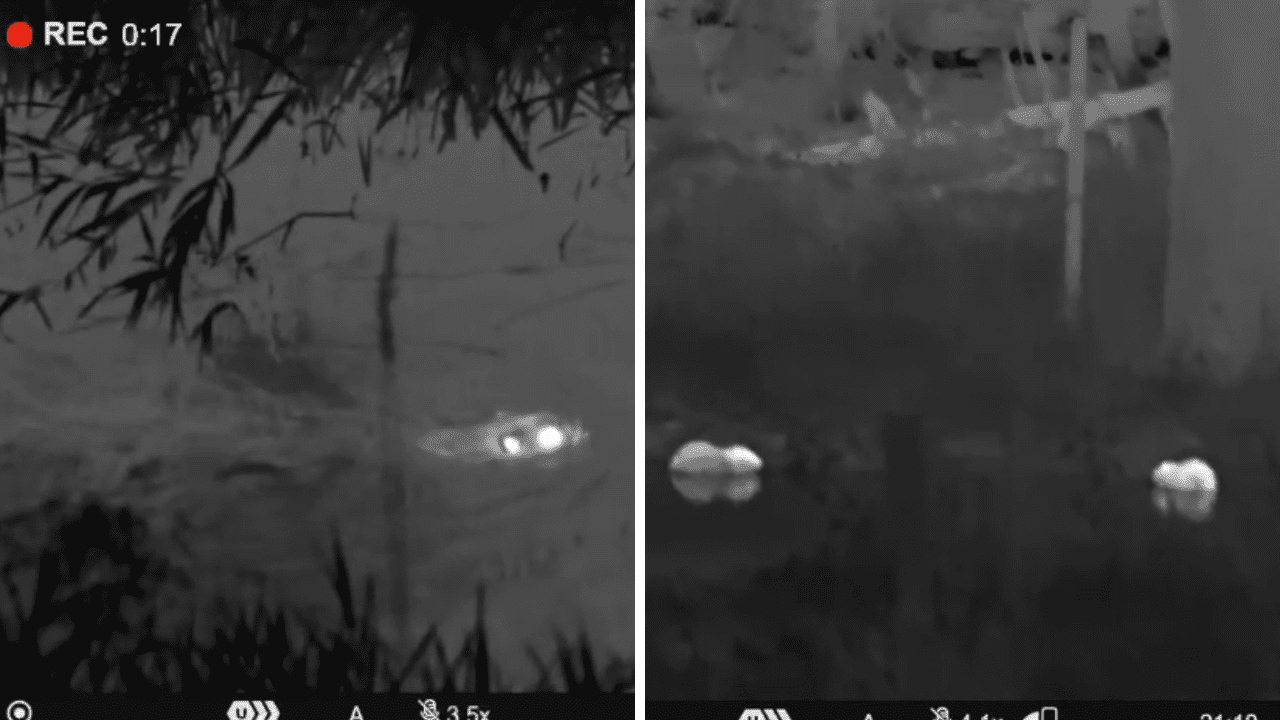The summer months can be much quieter for our Restoration team with the trapping/beaver translocation season coming to a close. However, the team’s work does not stop as they turn their hands to a range of beaver mitigation and management projects.
Beaver activities can significantly modify a landscape, and while this often brings enormous ecological benefits, it can create conflict for humans with land use in the same riparian (meaning relating to the bank of a watercourse) corridors that beavers are inhabiting. There is a range of techniques and interventions designed to reduce the impact of beaver damming, burrowing and foraging where conflict does occur.
This summer, the Restoration team have been putting these mitigation techniques into action across Scotland.
Tree protection
Beavers are solely herbivorous, foraging and feeding on vegetation and trees along riparian corridors. Trees in the immediate riparian zone may need protection if they are:
- Of high amenity or biodiversity value
- Veteran trees
- Crop trees
- Trees that may cause damage if felled
The team is on hand to offer advice on how to effectively protect trees over the long term, including what suitable materials to use and where to purchase these from, along with in-person demonstrations.

In the Bridge of Earn Diech burn area, the team worked with the community council to deliver tree wrapping demonstrations with the local community. By the end of the day, the group had protected a series of trees along the walking area by the Deich burn. Working and discussing the issues with the community not only helped protect the trees, but also helped resolve the conflicts those particular beavers were creating.
Careful planning should go into which trees you are protecting. Beavers are likely to feed on the next available, unprotected tree. Before you start implementing a protection measure, think strategically about which trees you want to protect, whether the species is likely to be impacted by beavers and which trees you might be willing to allow beavers to feed on.
Culvert protection
Although these designs are commonly used in North America, a new trial for culvert protection was undertaken using a trapezoidal culvert fence design supported by the NatureScot Mitigation Scheme and installed by our team.
The fence protects the culvert by physically excluding beavers from the area around the culvert inlet using wire fencing. Its shape also alters the physical and auditory cues that usually encourage dam building.
The mitigation aimed to prevent a culvert from being blocked and curb water levels from being raised, which would have had an impact on land drainage, causing flooding to neighbouring agricultural fields. The fence mesh surrounds the culvert, allowing no place for beavers to tunnel underneath.


Tayside survey & lodge watches
As part of the fourth Tayside beaver population study – a collaboration between NatureScot, Beaver Trust and the University of St Andrews – the team conducted lodge watches across a series of beaver-inhabited sites to better understand the family composition and number.
They observed a range of families in varying habitat types and observed some fascinating behaviours. A highlight of this year’s work was the addition of a thermal scope to the kit list, which allowed the team to find and watch the beaver families as the night drew in, allowing them to survey for longer periods and make clearer observations after dark.

Thermal images of beavers taken whilst conducting lodge watch surveys
International Beaver Symposium
An exciting culmination of the summer months was attending the International Beaver Symposium (IBS), which was held in Inverness in September. Roisin, Rob and Ben were amongst 150 delegates from over 20 different countries across Europe and North America presenting their latest beaver research.
The event consisted of a mix of oral presentations, speed talks, posters and site visits, providing an excellent opportunity for collaboration and knowledge exchange.
What did the team present on?
- Survival of wild beavers (Castor fiber) translocated for human-wildlife conflict mitigation in Britain.
- Beaver Dam Assessment Methodology for Salmonids (BDAMS)
- The impact of reintroduced Eurasian beaver (Castor fiber) dams on the upstream movement of brown trout (Salmo trutta) in upland areas of Great Britain
- Beavers on the down-low: Monitoring and managing Eurasian beavers (Castor fiber) and their effects on floodplain habitats.



Above: Beaver Trust’s Dr Roisin Campbell-Palmer, Dr Robert Needham and Ben Morris standing proudly with their posters at the IBS.
Looking ahead
The team have now returned to the busy trapping season, with some exciting translocations and releases planned both in Scotland and England for winter 2025 and spring 2026.
To learn more about how our Restoration Team can support your project, visit beavertrust.org/restoration-services
